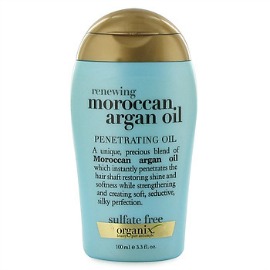
2014-04-02 09:36:23
What’s Hot in Beauty in The Americas
2014-04-02 09:36:23
By Kay Tamillow, senior research analyst, Euromonitor
 Kay Tamillow |
A strong beauty culture in South America is driving sales, despite sluggish economic growth in some countries.
A slowdown in 2013 and 2014 in Brazil is a potential threat for discretionary purchases like beauty and personal care. However, Brazilian women remain fashion-focused, and small indulgences like lipstick are still doing well.
For color cosmetics, this cultural behavior is very positive, since, even during periods of crisis, the investment in new colors and innovation in lip products will always see a return.
Similarly, nail products are still very popular in markets such as Argentina and the Dominican Republic.
While there is a declining volume of beauty and personal care sales in the Dominican Republic, nail products are the big winner as there is growth in both volume and value; innovation and color ranges have been attributed to strengthening the trend.
 Nail products are still popular in South American markets, despite sluggish economies. |
In Argentina, nail color has overtaken lipstick as the guilty little indulgence for women, and nail products are the best performing category for beauty and personal care in the country.
The Demand for Convenience
Demand for convenient and multifunctional products is growing across the Americas. In Canada, spray formats have benefitted from their faster and easier application, with Vaseline Spray & Go body lotion being one notable example.
Consumers in the U.S. are looking to save time with multifunctional skin care products, with BB and CC creamsleading the way thanks to their claims to provide the benefits of foundation, facial moisturizer, concealer and primer in one tube. BB and CC creams have also arrived in South America.
In Mexico, direct-sellers like Avon, Oriflame and Yanbal are now competing against Garnier by L’Oréal, which launched the first BB cream in Mexico in 2012. BB creams are also set to see strong growth in Brazil, Chile and Colombia as consumers look for more time-saving solutions and find it cheaper to buy one slightly expensive product versus multiple items separately.
Natural Products Gain Ground
Natural products continue to gain ground in mature North American markets and in South America. Consumers in the U.S. are using more natural products, especially those that deliver on promised results and that are competitively priced.
The trend ranges from natural toothpastes and breath sprays from Hello Oral Care to hair care treatments with Moroccan oil and Shea butter fromOrganix.
 Moroccan hair oil products, such as this one by Organix, are popular in South America. |
The natural trend is also gaining ground in South America thanks to growing awareness of health and wellness concerns as well as environmental considerations.
Natura, the leading beauty player in Brazil, operates on a platform of natural ingredients and eco-friendly practices and continues to grow rapidly around the region, especially in Chile, Colombia and Mexico.
Meanwhile, in Costa Rica, consumers are increasingly vocal about their desire to use products safer for the environment or with fewer chemicals.
Companies have created marketing campaigns around this effort, emphasizing use of aloe vera and other natural/organic ingredients.
Demand for natural products is likely to see continued growth in the short term, with opportunities for more local and smaller to differentiate themselves in the market.
Direct-selling continues to be the most important distribution channel in Latin America. Direct-selling provides alternative employment opportunities for women in the region and also a way to reach a broader audience than store-based retailers.
In Ecuador, direct-selling is the fastest growing distribution channel and key to expanding the consumer base for beauty and personal care. With the expansion and evolution of the retailing atmosphere in the region, direct sellers are adopting new strategies to stay competitive.
For example, in Bolivia, direct sellers are no longer relying only on word-of-mouth advertising from representatives and buyers, but also on more mainstream strategies like TV commercials, print media and billboards. The dominance of direct-selling will bring beauty and personal care products to a wider range of socioeconomic groups over the next five years, and personal consultations will likely push consumers to try more specialized products.
More Men's Launches Are Expected
Niche products like men’s grooming and intimate hygiene continue to gain attention in South America with new product launches and creative advertising and educational campaigns. Intimate hygiene products are seeing stronger support and consumer awareness campaigns from market leaders such as Sanofi in Ecuador, Guatemala, Mexico and Peru. Meanwhile in Bolivia, direct-sellers are promoting the category with discounts and personal consultations with representatives.
At the same time, more launches in men’s grooming products are having mixed results in South America. In Brazil, men’s grooming is booming and men are more willing to try products beyond shaving and deodorant.
Shampoo and even skin care lines for men have seen new launches and promise growth over the short and long term. However, there is still a strong macho culture to overcome in other countries such as Argentina, Ecuador and Guatemala, where men’s products outside of shaving and deodorant face more resistance.
Despite cultural challenges to overcome, more product launches in both intimate hygiene and men’s grooming are likely in the next five years, with consumer education and awareness a crucial factor in expanding consumer demand.
LinkedIn




